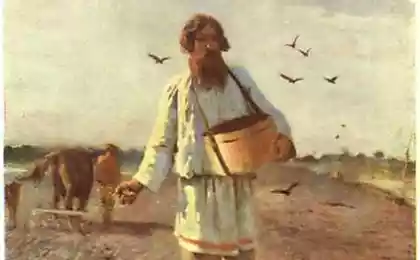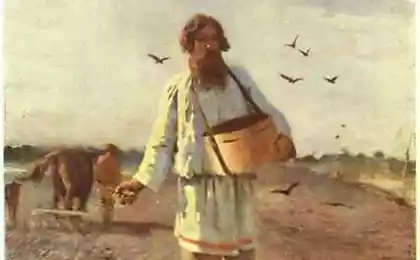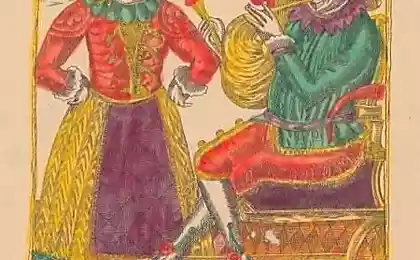830
7 Facts About How To Maid In Russia differ from married women
Now understand, married woman or not can be a ring or the page on a social network, or a passport, if you can go look. Previously, the same distinguishing features were a lot more. How was it possible to quickly and easily check the status of an unknown girl in Russia?
By headdress
Headgear in Russia was not only protection from the sun and cold, but also served as a status indicator. Unmarried girls can go bareheaded or with headgear, leaves open the top of the head (sometimes even in the church). Since all of the girl was hidden multilayer clothing, outdoor "crown" was intended to emphasize its beauty, the joy of good fellows.

After the girl got married, her head covered with a female piece. In X-XI centuries headdress of married women called "ochipok" reminded the head towel.

In XV-XVI centuries women have worn "ubrus" - embroidered with white or red cloth, the ends of which is richly decorated with pearls and descended on the shoulders, chest and back
.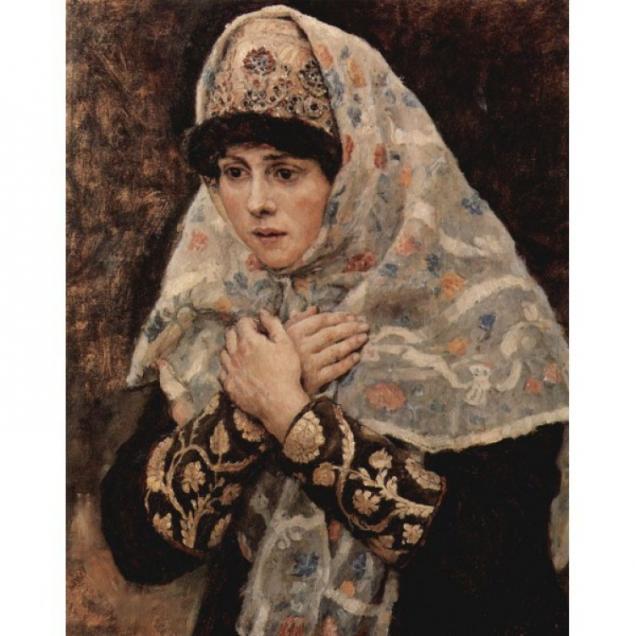
According to the crown
Crowns in Russia were only girls, so the crown - a symbol of girlhood. The crown represented the hoop of leather or birch bark, covered with a cloth and ornate (beads, stones, plates, embroidery, river pearls and stones). Sometimes the crown could have three or four teeth and a removable front portion, which was called hu.

Getting married, the girl said goodbye to his crown or his abducted bride. The word "crown" is derived from the Russian "venit", that is "engaged in the harvest." Harvest - the eternal concern of farmers, and therefore received the bridegroom a helpmate "to dowry" ( "to harvest"), for which he had to pay a ransom to parents, as they were deprived of their assistants. Hence, too, and a wreath part in a wedding ceremony.
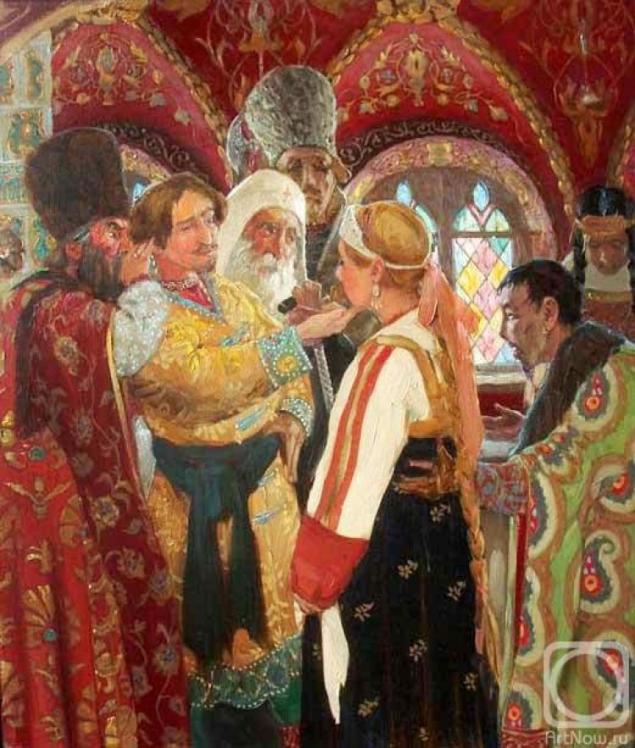
According earrings
In Russia there was a tradition associated with the wearing of earrings: in girls and married, they differ in shape and size. First earrings daughter received a gift from his father in five years, these earrings woman kept all his life. Unmarried wore elongated earrings simple form with little or no decoration. Earrings married women were more expensive, more complicated, richer - status
.
In the queue
As soon as a girl in Russia reached a certain age, it began to be strictly defined hair - plait woven usually three strands. First Spit - a new adult life. Together with oblique relied another, no children, and women's clothing. Kos - girlish beauty, considered the main advantage of the outside girls. Good, thick hair is highly regarded as the strength and health. Those who do not work to grow a thick braid, resorted to deception - weave braids in his hair from horses' tails. If she wore a single braid - meant that she was in "active search»
.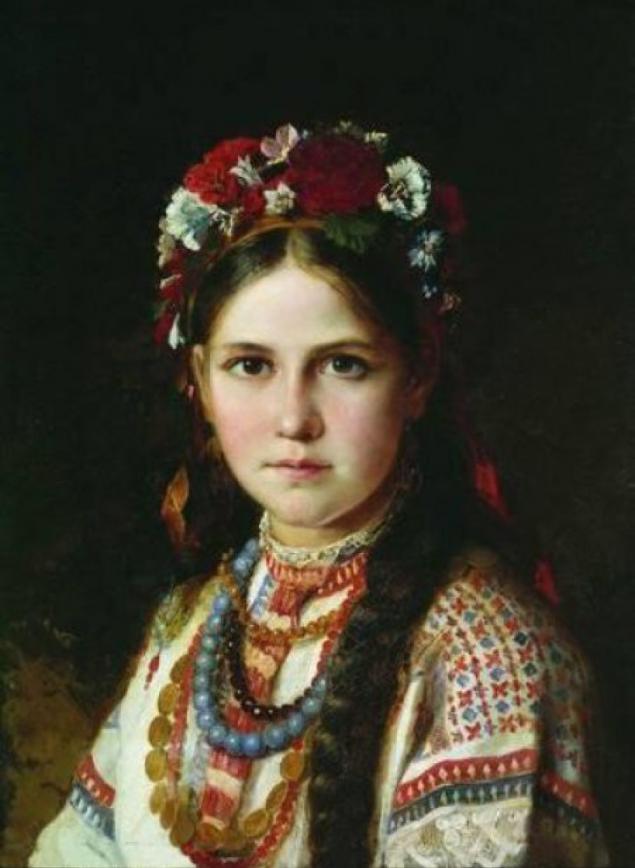
If the tape appeared to spit at the girls, the girls status meant - "marriageable". As soon as she appeared fiance and already received a blessing to the marriage of the parents, instead of one tape appeared two, and they were not woven into braids from the base and from its mid

It was the signal for the other suitors that further their efforts are in vain, because she and her family have already decided on a candidate for a husband. In occasions marriageable girls wore flowing hair. By communion in the Church, the feast, the girl walked down the aisle "Kosmach". In such cases, welcomed the hair waving in wealthy families. Before the wedding, girlfriend crying unravel the bride hair and she said goodbye to the familiar hair as a symbol of carefree girlhood. Upon entry into marriage the girl plait two braids, which are then laid around the head like a crown, an allusion to its new, higher family status. Covered head -Documents of marriage. Now, no one except her husband, could not see her hair and removed her headdress. If a girl has cut the braid on their own, then most likely, she mourned the deceased groom, and hair cutting was for her an expression of deep sorrow and reluctance to marry.

According to the ornament and clothing color
ornament on clothes could tell a lot about its owner. For example, in the Vologda region, tree depicted on the shirts for pregnant women. Chicken embroidered on clothes married, white swans - unmarried girls. Dress in blue were unmarried girls who are preparing for the wedding, or the old lady.

Here, for example, red sundress worn by those who have just got married. The more time has passed after the wedding, the less red woman used in her clothing. Horned Frog below apron - a symbol of fertility, confirmation that this girl can give birth. A frog - a symbol of new mothers in the state which aspires to get every self-respecting girl at the time. So, horned frog pointed out that the girl in front of you, wishing firstborn.

By skirt
The basis of the female costume was a shirt. From men it differed only in length - up to a foot. But his shirt was considered unseemly to go - on top of it put more dense clothes. Unmarried girls wore apron - holschёvy rectangular piece of cloth, folded in half and in the crook who had an opening for the head. The apron is not ligated to the sides, it was in short shirt and worn on top of it. The apron is always girdled.
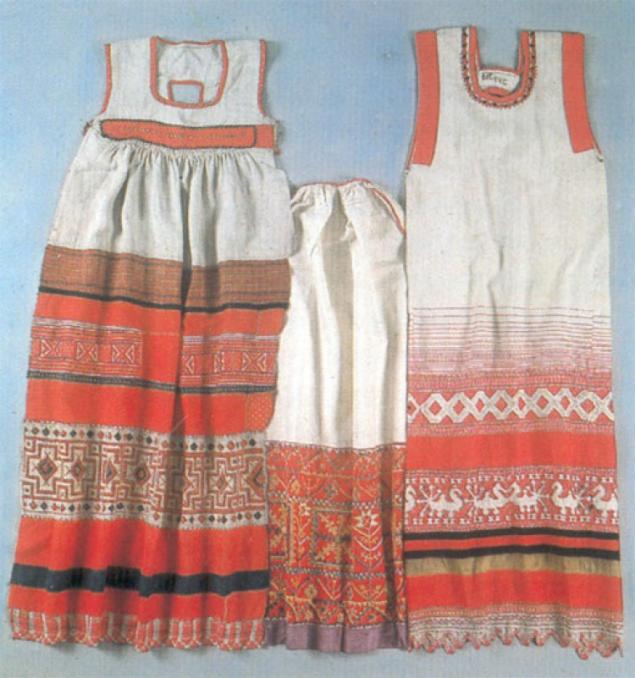
Married women wear over a shirt ponёvu (or Ponko) - skirt, not sewn, and smell around the figure and fastened around the waist cord - Gashnikov. Where better to hide? - For Gashnikov. - It is since
!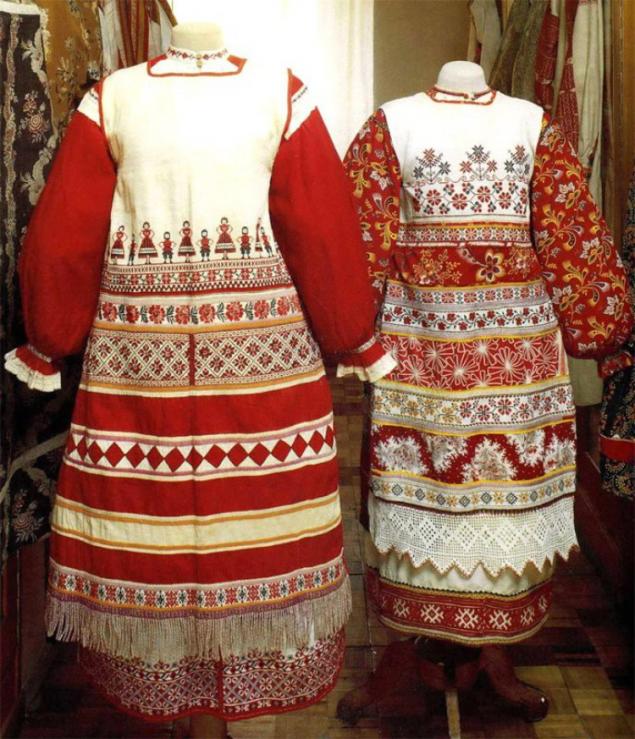
For the first time Ponko wore on the day of the wedding or shortly after. She symbolically jumped from the bench in ponёvu - it symbolized her consent to the marriage. Knotted ponёvu her parents or brother. If a girl is not married, she went to a lifetime apron, ponёvu could not wear.

On wedding ring
If you had the opportunity to approach a woman so close, something to consider if she had a ring on his finger - and then used this proven method. The Orthodox wedding ring worn on the ring finger of his right hand. It was smooth and easy.

Loading ... Loading ...
Liked? Share with your friends!
Loading ... Loading ...
By headdress
Headgear in Russia was not only protection from the sun and cold, but also served as a status indicator. Unmarried girls can go bareheaded or with headgear, leaves open the top of the head (sometimes even in the church). Since all of the girl was hidden multilayer clothing, outdoor "crown" was intended to emphasize its beauty, the joy of good fellows.

After the girl got married, her head covered with a female piece. In X-XI centuries headdress of married women called "ochipok" reminded the head towel.

In XV-XVI centuries women have worn "ubrus" - embroidered with white or red cloth, the ends of which is richly decorated with pearls and descended on the shoulders, chest and back
.

According to the crown
Crowns in Russia were only girls, so the crown - a symbol of girlhood. The crown represented the hoop of leather or birch bark, covered with a cloth and ornate (beads, stones, plates, embroidery, river pearls and stones). Sometimes the crown could have three or four teeth and a removable front portion, which was called hu.

Getting married, the girl said goodbye to his crown or his abducted bride. The word "crown" is derived from the Russian "venit", that is "engaged in the harvest." Harvest - the eternal concern of farmers, and therefore received the bridegroom a helpmate "to dowry" ( "to harvest"), for which he had to pay a ransom to parents, as they were deprived of their assistants. Hence, too, and a wreath part in a wedding ceremony.

According earrings
In Russia there was a tradition associated with the wearing of earrings: in girls and married, they differ in shape and size. First earrings daughter received a gift from his father in five years, these earrings woman kept all his life. Unmarried wore elongated earrings simple form with little or no decoration. Earrings married women were more expensive, more complicated, richer - status
.

In the queue
As soon as a girl in Russia reached a certain age, it began to be strictly defined hair - plait woven usually three strands. First Spit - a new adult life. Together with oblique relied another, no children, and women's clothing. Kos - girlish beauty, considered the main advantage of the outside girls. Good, thick hair is highly regarded as the strength and health. Those who do not work to grow a thick braid, resorted to deception - weave braids in his hair from horses' tails. If she wore a single braid - meant that she was in "active search»
.

If the tape appeared to spit at the girls, the girls status meant - "marriageable". As soon as she appeared fiance and already received a blessing to the marriage of the parents, instead of one tape appeared two, and they were not woven into braids from the base and from its mid

It was the signal for the other suitors that further their efforts are in vain, because she and her family have already decided on a candidate for a husband. In occasions marriageable girls wore flowing hair. By communion in the Church, the feast, the girl walked down the aisle "Kosmach". In such cases, welcomed the hair waving in wealthy families. Before the wedding, girlfriend crying unravel the bride hair and she said goodbye to the familiar hair as a symbol of carefree girlhood. Upon entry into marriage the girl plait two braids, which are then laid around the head like a crown, an allusion to its new, higher family status. Covered head -Documents of marriage. Now, no one except her husband, could not see her hair and removed her headdress. If a girl has cut the braid on their own, then most likely, she mourned the deceased groom, and hair cutting was for her an expression of deep sorrow and reluctance to marry.

According to the ornament and clothing color
ornament on clothes could tell a lot about its owner. For example, in the Vologda region, tree depicted on the shirts for pregnant women. Chicken embroidered on clothes married, white swans - unmarried girls. Dress in blue were unmarried girls who are preparing for the wedding, or the old lady.

Here, for example, red sundress worn by those who have just got married. The more time has passed after the wedding, the less red woman used in her clothing. Horned Frog below apron - a symbol of fertility, confirmation that this girl can give birth. A frog - a symbol of new mothers in the state which aspires to get every self-respecting girl at the time. So, horned frog pointed out that the girl in front of you, wishing firstborn.

By skirt
The basis of the female costume was a shirt. From men it differed only in length - up to a foot. But his shirt was considered unseemly to go - on top of it put more dense clothes. Unmarried girls wore apron - holschёvy rectangular piece of cloth, folded in half and in the crook who had an opening for the head. The apron is not ligated to the sides, it was in short shirt and worn on top of it. The apron is always girdled.

Married women wear over a shirt ponёvu (or Ponko) - skirt, not sewn, and smell around the figure and fastened around the waist cord - Gashnikov. Where better to hide? - For Gashnikov. - It is since
!

For the first time Ponko wore on the day of the wedding or shortly after. She symbolically jumped from the bench in ponёvu - it symbolized her consent to the marriage. Knotted ponёvu her parents or brother. If a girl is not married, she went to a lifetime apron, ponёvu could not wear.

On wedding ring
If you had the opportunity to approach a woman so close, something to consider if she had a ring on his finger - and then used this proven method. The Orthodox wedding ring worn on the ring finger of his right hand. It was smooth and easy.

Loading ... Loading ...
Liked? Share with your friends!
Loading ... Loading ...
Simple Way to Boil Eggs that they clean in a split second
Sport Spas Anoreksichku from death and make her beauty!


